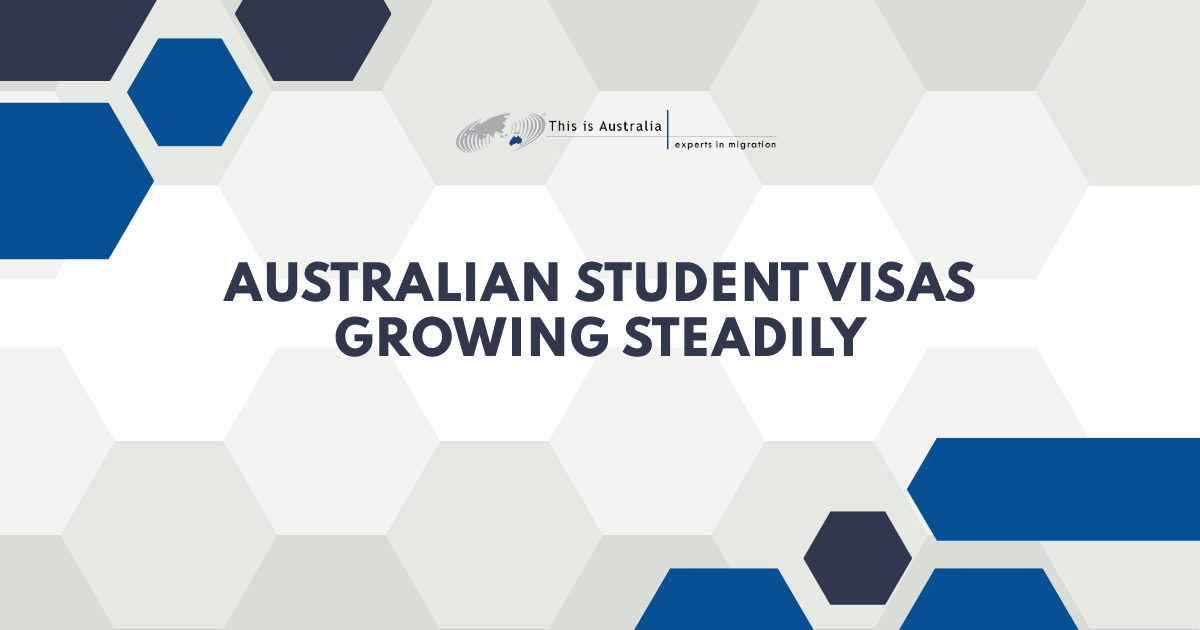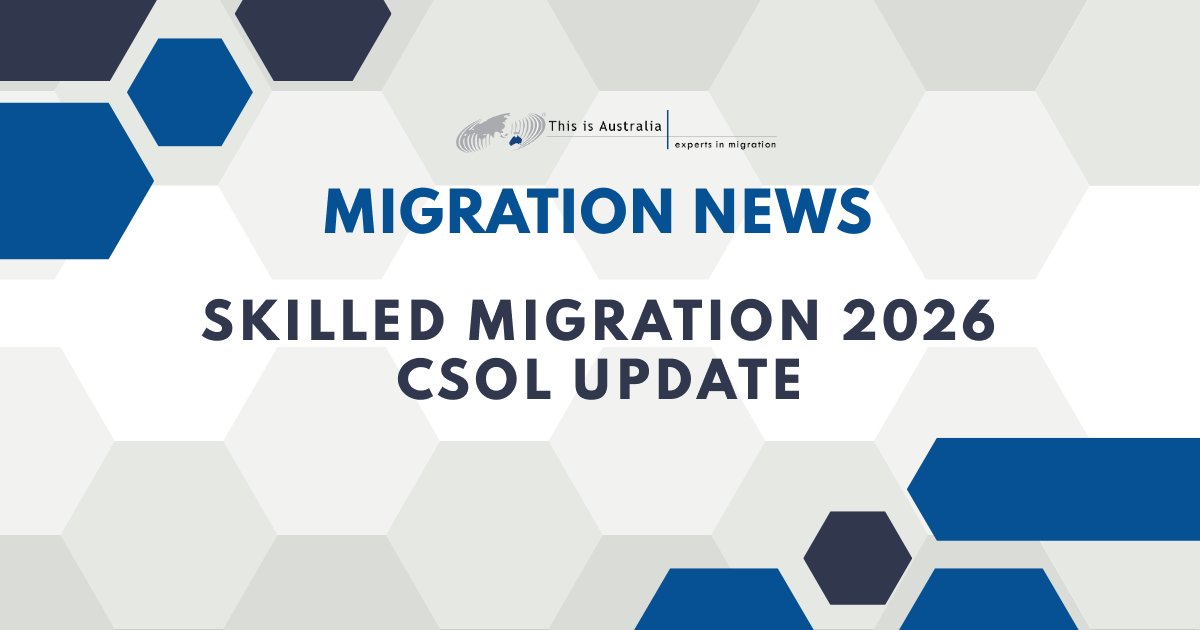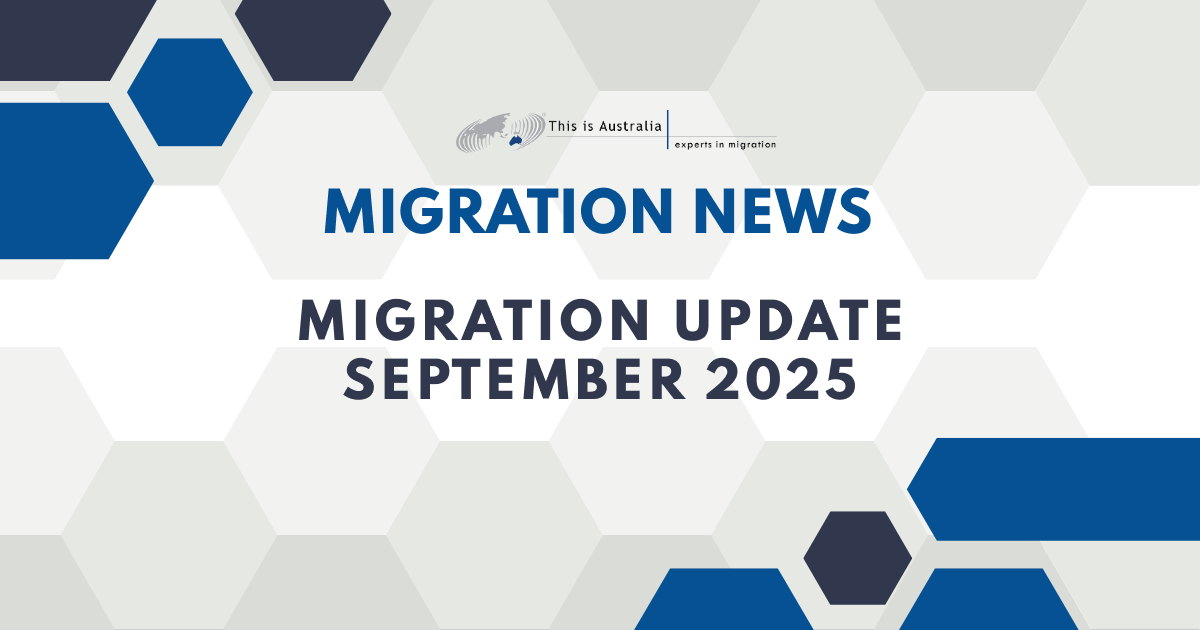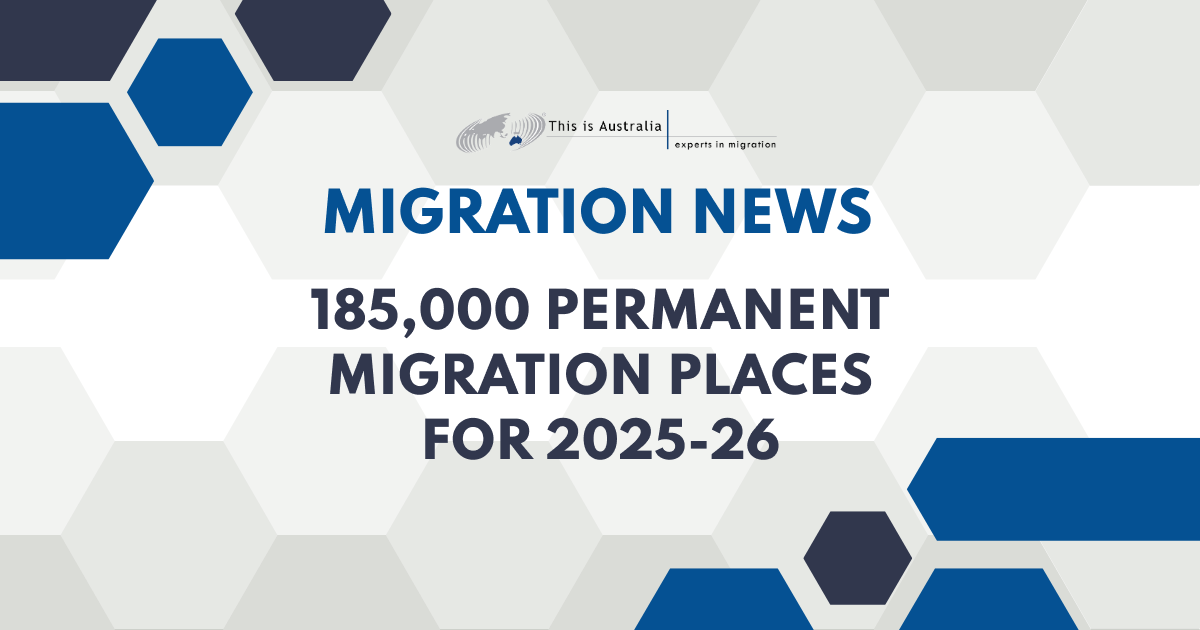Migration Insights for Students and Workers
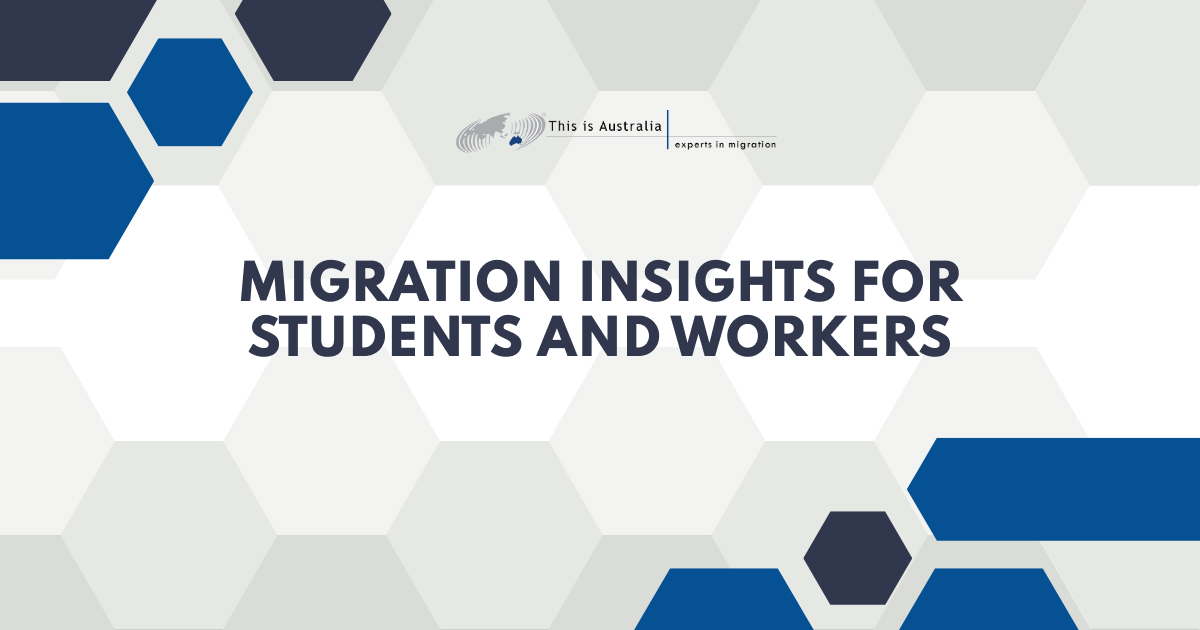
Australia continues to be a sought-after destination for individuals seeking quality education and diverse employment opportunities.
This overview focuses on key data from the 2023-2024 financial year, shedding light on trends in student visas, skilled migration pathways, and family visa considerations.
Student Visa Insights
Key updates include:
- Processing restrictions: The introduction of Ministerial Direction 111 has slowed student visa processing, particularly for education providers nearing new enrolment caps. This has led to a drop in granted student visas and increased scrutiny of applications.
- Ongoing high demand: Despite policy tightening, student arrivals in early 2025 reached record levels, indicating persistent demand for Australian education, especially at the university level.
The international education sector remains a significant component of Australia’s migration landscape. In the 2023-2024 financial year, there were 207,000 migrant arrivals on temporary student visas.
This figure represents a decrease from the 278,000 student arrivals recorded in 2022-23, suggesting a period of adjustment and stabilisation in this sector following the surges experienced after the full reopening of international borders.
Despite the decrease in new arrivals, the total number of student visa holders in Australia reached a record high of 608,262 as of June 30, 2024, an increase from 568,753 in the previous year, indicating a substantial existing student population.
Recent government data, specifically for the period from October 2023 to August 2024 (which overlaps with the 2023-2024 financial year), indicated a notable decline in the number of student visas granted, with approximately 298,000 issued during this timeframe.
The vocational education and training (VET) sector and English Language Intensive Courses for Overseas Students (ELICOS) experienced particularly significant reductions in visa grants during this period. Nevertheless, visas for higher education continued to form a substantial component of the student visa program.

Skilled Migration Pathways
The Australian government maintains its commitment to skilled migration as a crucial means of addressing workforce needs and fostering economic growth. For the 2023-2024 Migration Program, 137,100 places were delivered within the Skill stream. This outcome was slightly lower than the 142,344 places filled in the 2022-23 program year. The Skill stream constituted 72.2 per cent of the total Migration Program outcome in 2023-24.
Key developments and trends within the Skill stream for 2023-2024 include:
-
- Employer-Sponsored Visas: A total of 36,825 Employer-Sponsored visa places were delivered. This marked an increase from the 35,000 places allocated in the preceding year. The primary source countries for migrants in this category were India, the United Kingdom, and the Philippines.
- Onshore Applicants: A significant proportion of permanent skilled visas, accounting for 57.2% of the total permanent program, were granted to individuals who were already residing in Australia on temporary visas. Many of these applicants transitioned from Temporary Graduate visas or Temporary Resident (Skilled Employment) visas.
- Planning for 2024-2025: Looking ahead, the government has allocated 132,200 places to the Skill stream for the 2024-2025 permanent Migration Program. This represents approximately 71% of the total program target of 185,000 places. Notably, this includes an increase in Employer-Sponsored visa places to 44,000. Conversely, places for Skilled Independent visas are planned to decrease significantly to 16,900, a reduction from the 30,375 places available in 2023-2024.
- New Visa Developments: The government has announced the forthcoming introduction of a new National Innovation visa, which is intended to eventually replace the existing Global Talent visa. The Skills in Demand (SID) visa has also been introduced, set to replace the Temporary Skills Shortage (TSS) subclass 482 visa, with some of its streams becoming effective from late 2024.
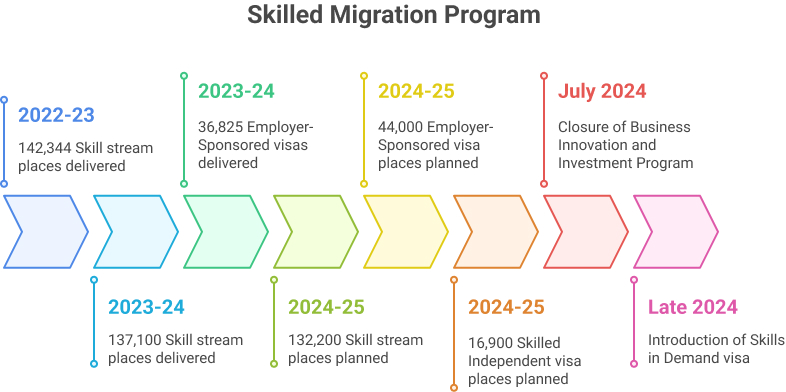
Family Visa Considerations
In the 2023-2024 financial year, the government established specific caps for various family visa categories. For instance, 6,800 Contributory Parent visas and 1,700 Parent visas were allocated. 500 places were set aside for Other Family visas, which include categories such as Aged Dependent Relative, Remaining Relative, and Carer visas.
Processing times for family visas, particularly non-contributory Parent visas, can be extensive due to high demand and the annual limits on available places.
As of late April 2025, applications for Remaining Relative and Aged Dependent Relative visas with queue dates up to February 2013 were being released for final processing, indicating very lengthy waiting periods for these specific subclasses.
Contributory Parent visas generally have shorter processing times, typically around 12 to 18 months, attributable to the higher visa application charge and a greater number of allocated places.
The planning level for the Family stream in the 2024-2025 Migration Program is set at 52,500 places, which is consistent with the allocation for the previous year. This includes an estimated 23,000 places for Partner visas and 8,500 places for Parent visas. The Child visa program operates on a demand-driven basis, with an estimated 3,000 places anticipated.
Let This is Australia Be Your Guide
This is Australia can help you navigate the complexities of migration. From assessing your eligibility for a skilled visa to guiding you through student visa applications or planning your family’s move. Contact This is Australia today for a personalised consultation.

